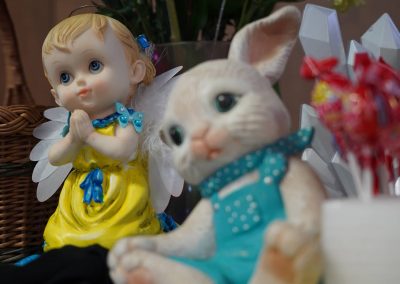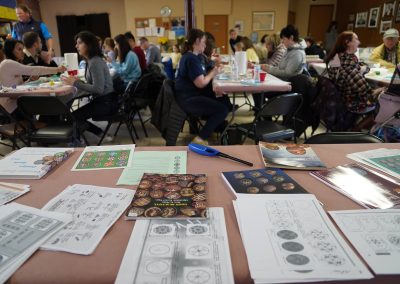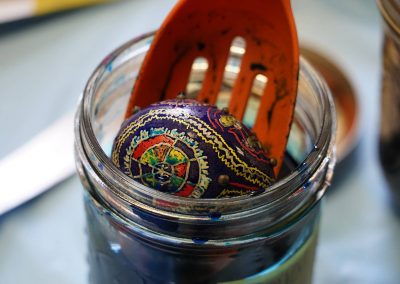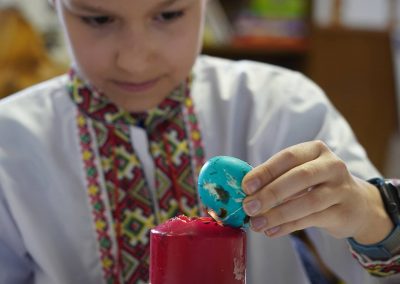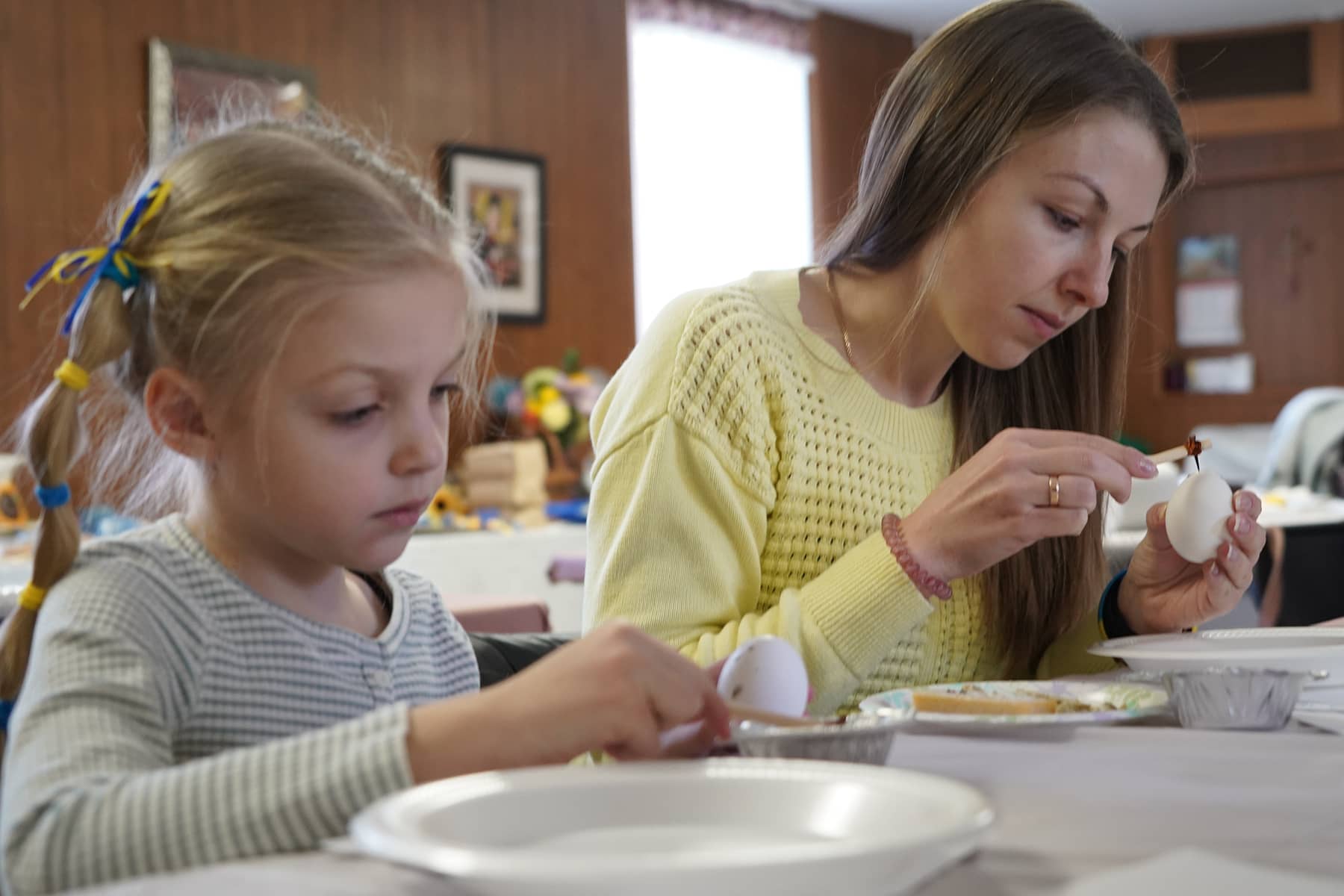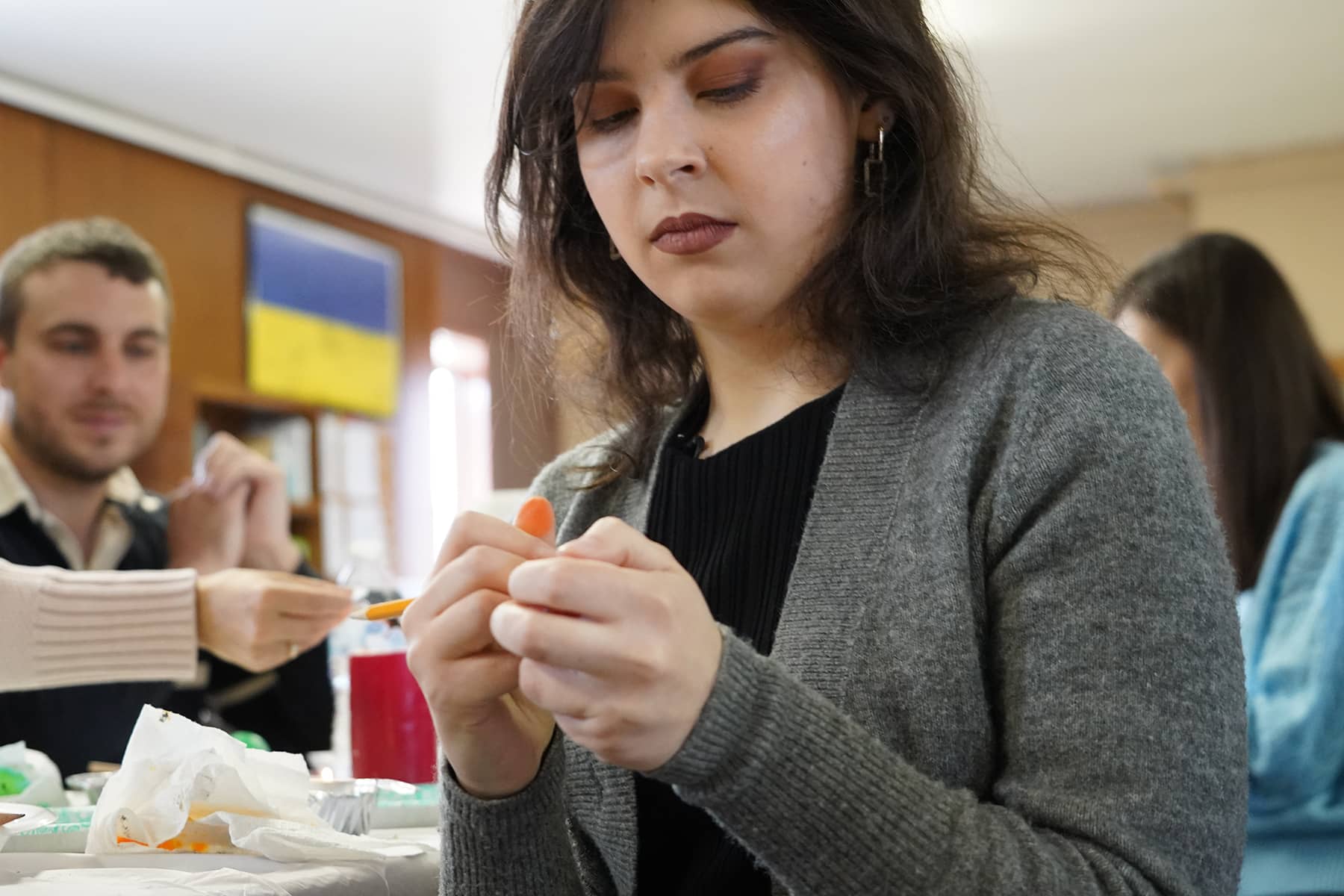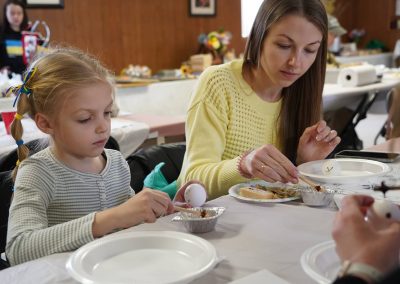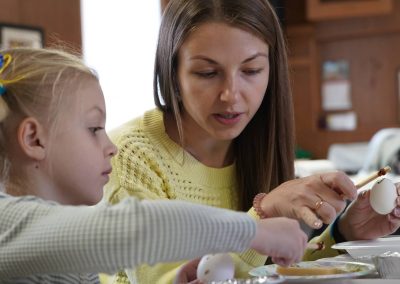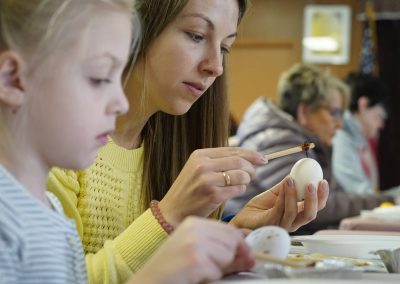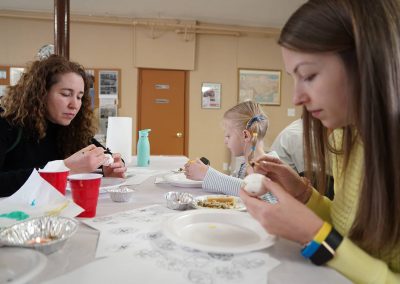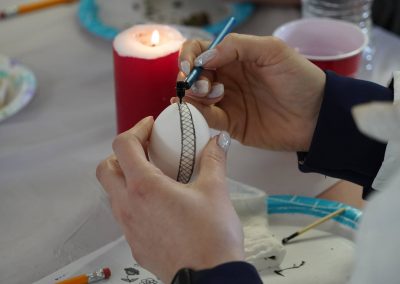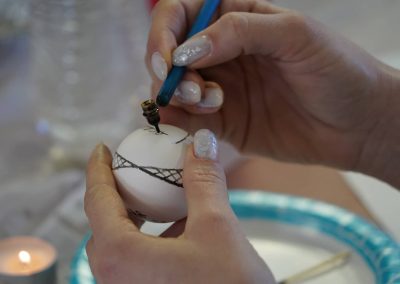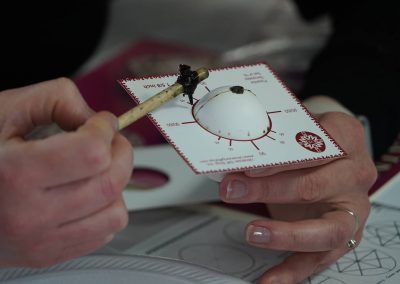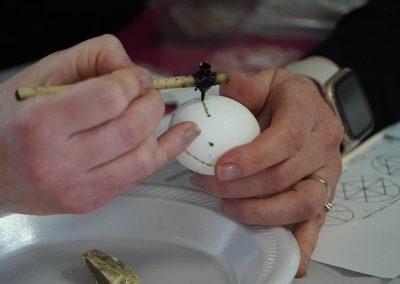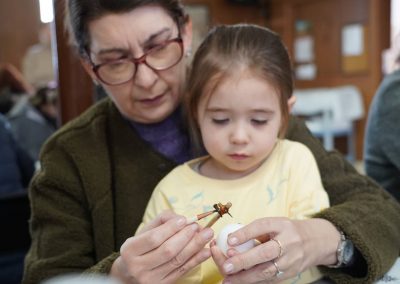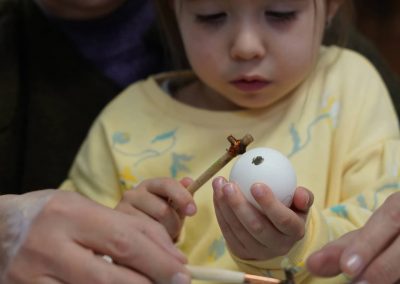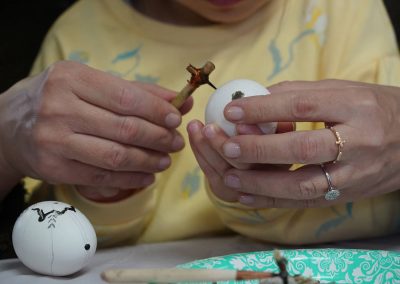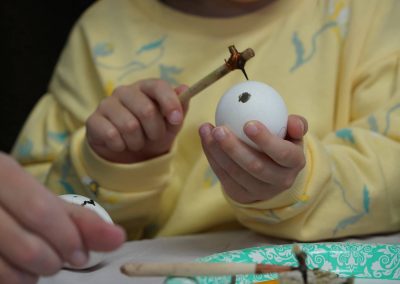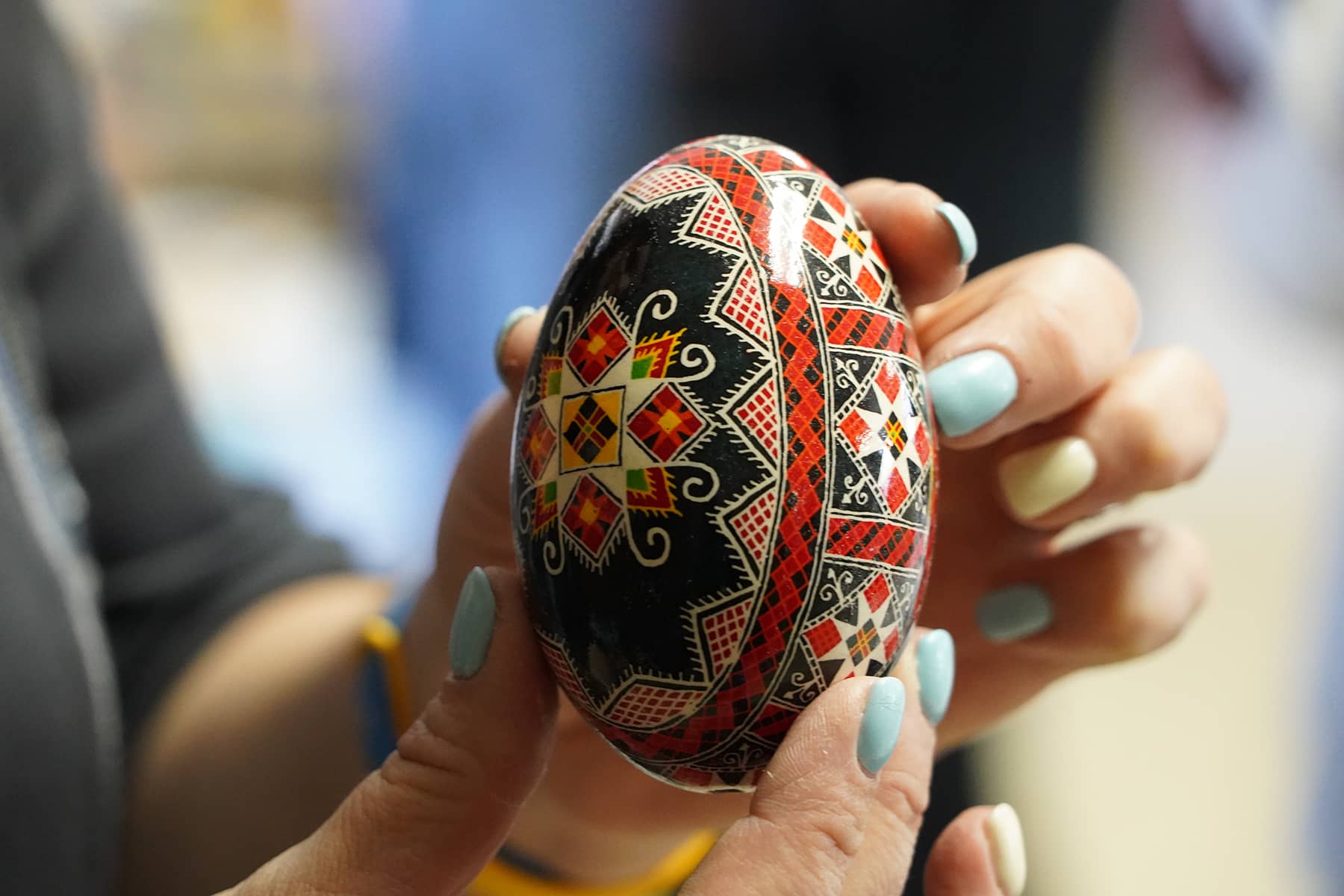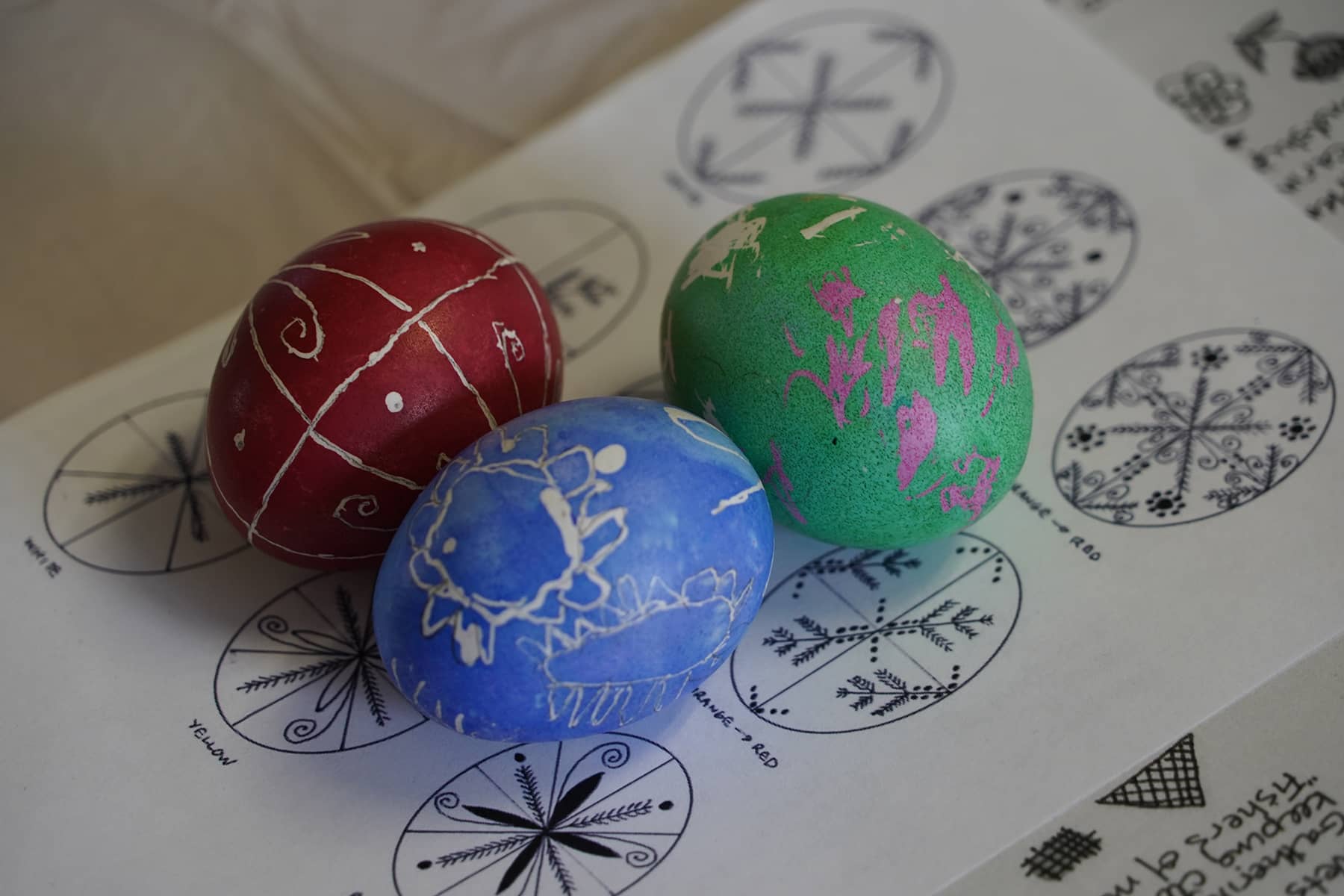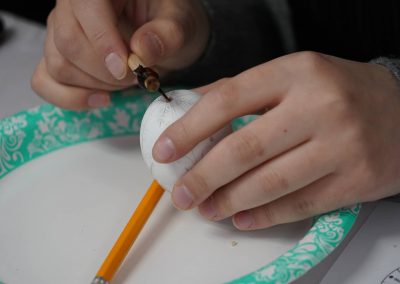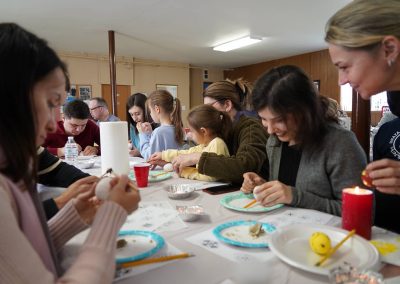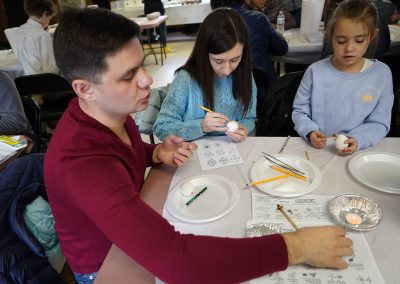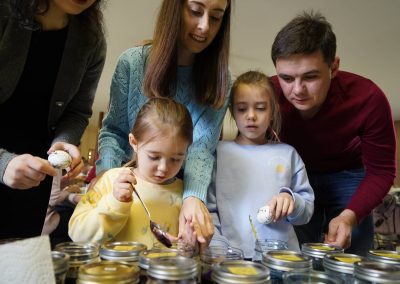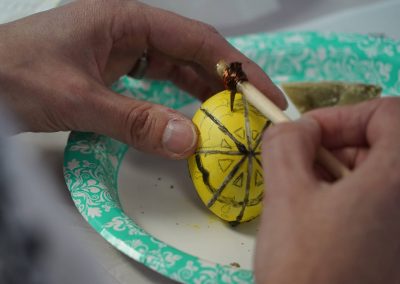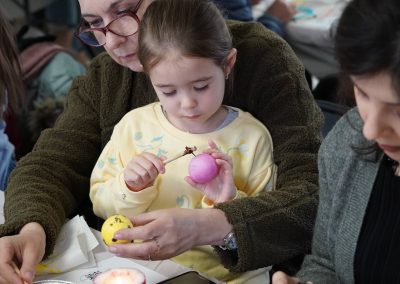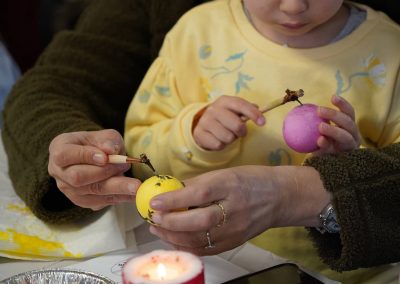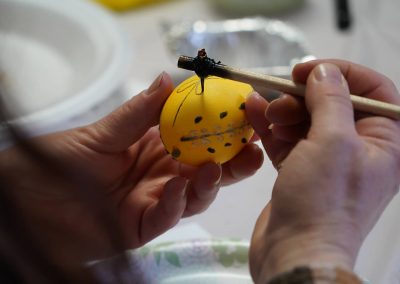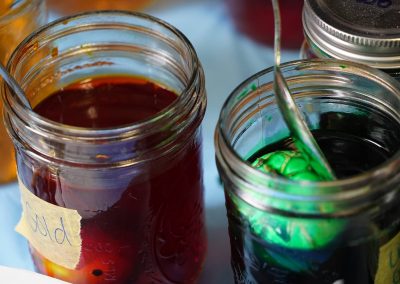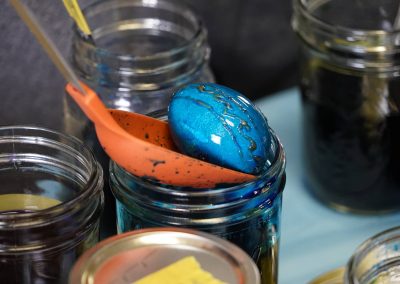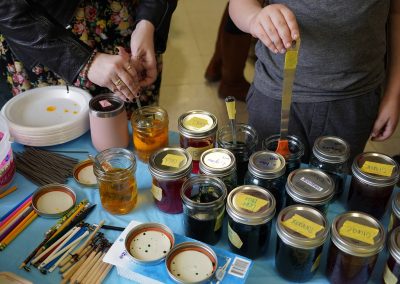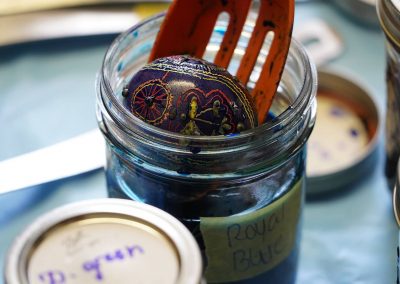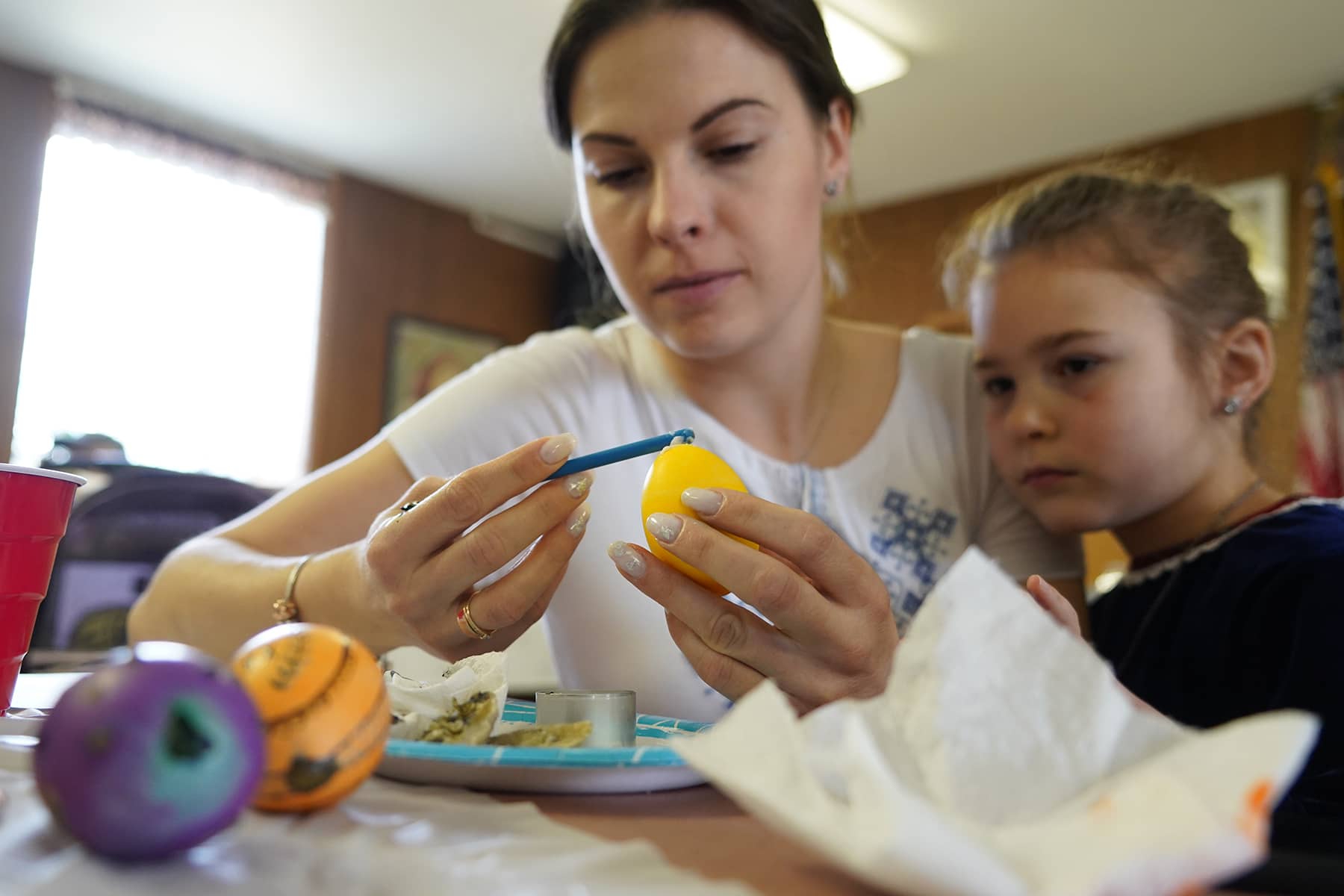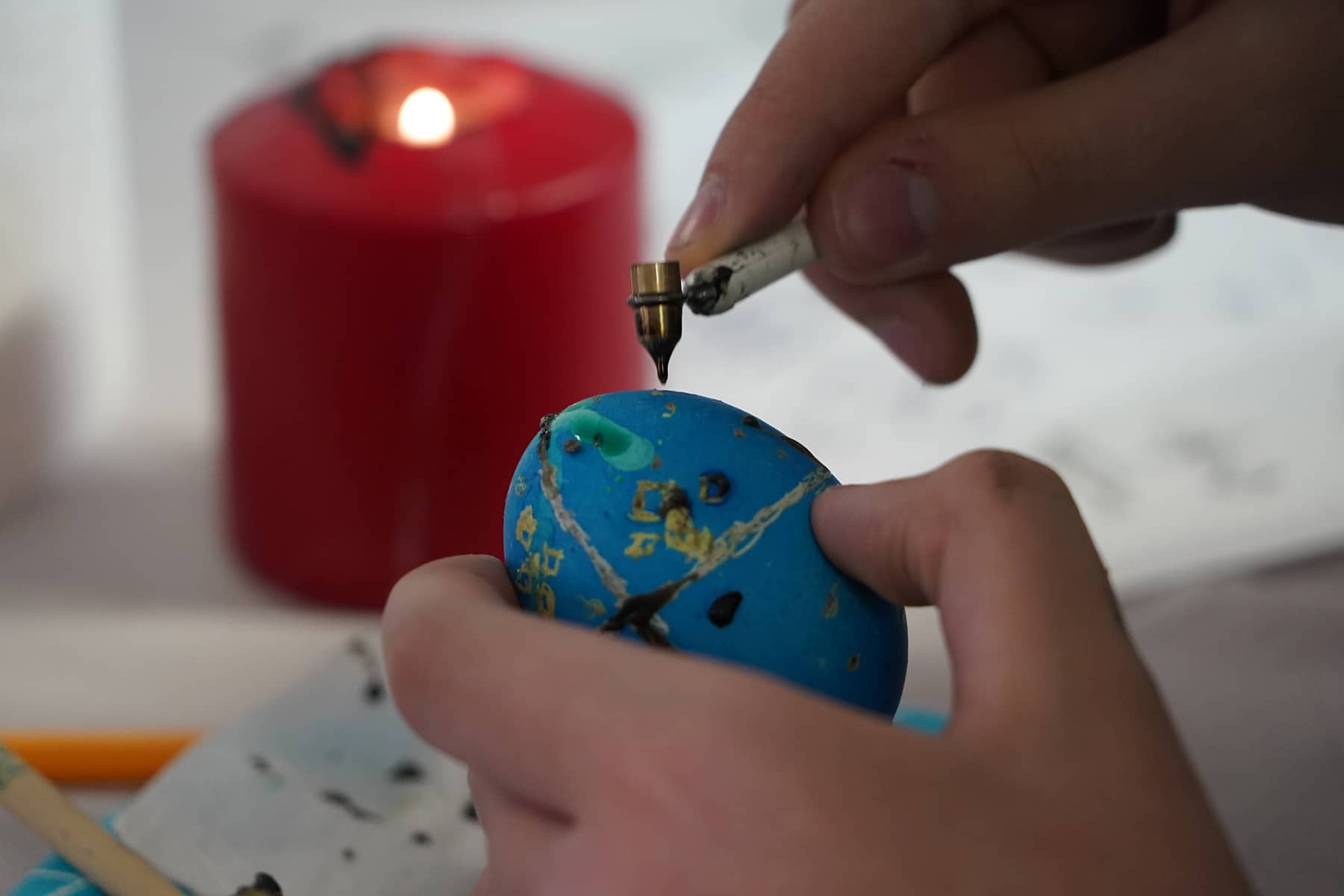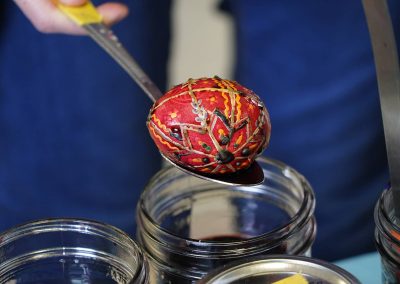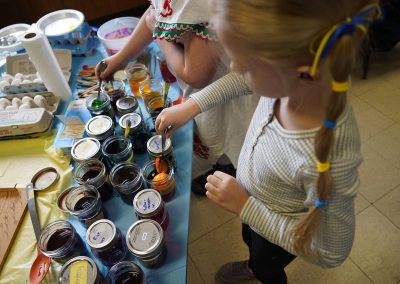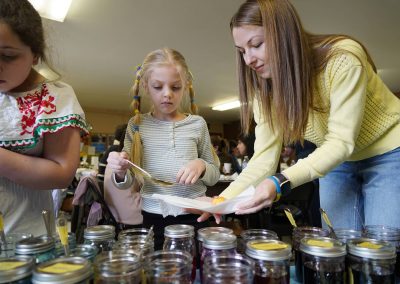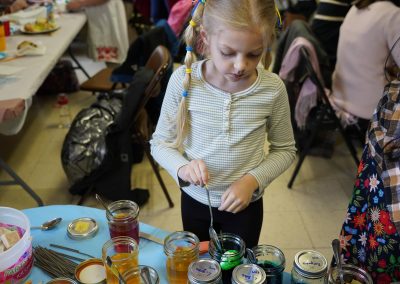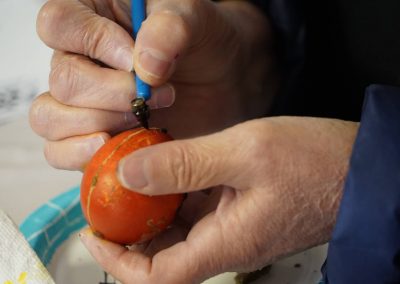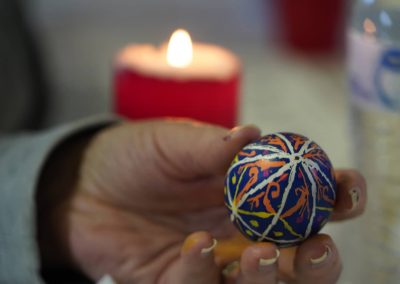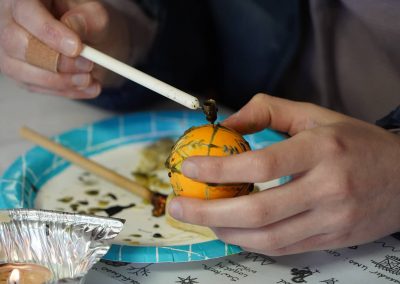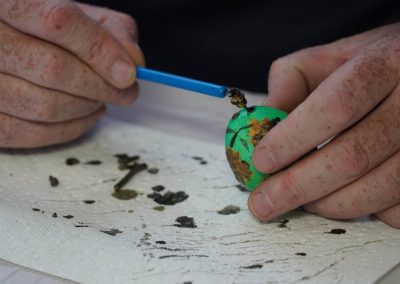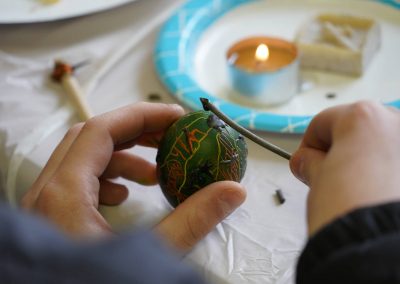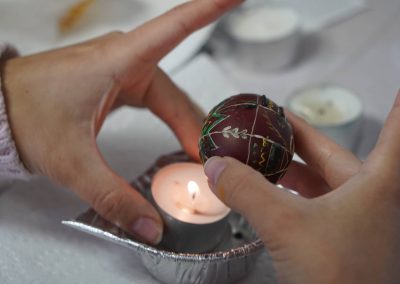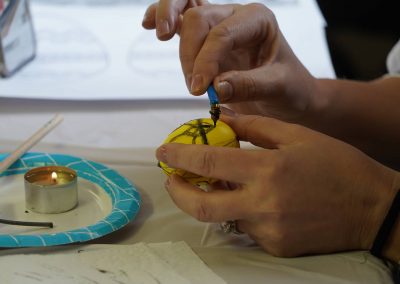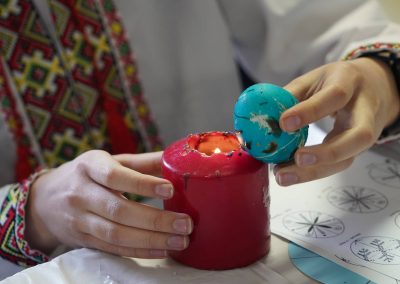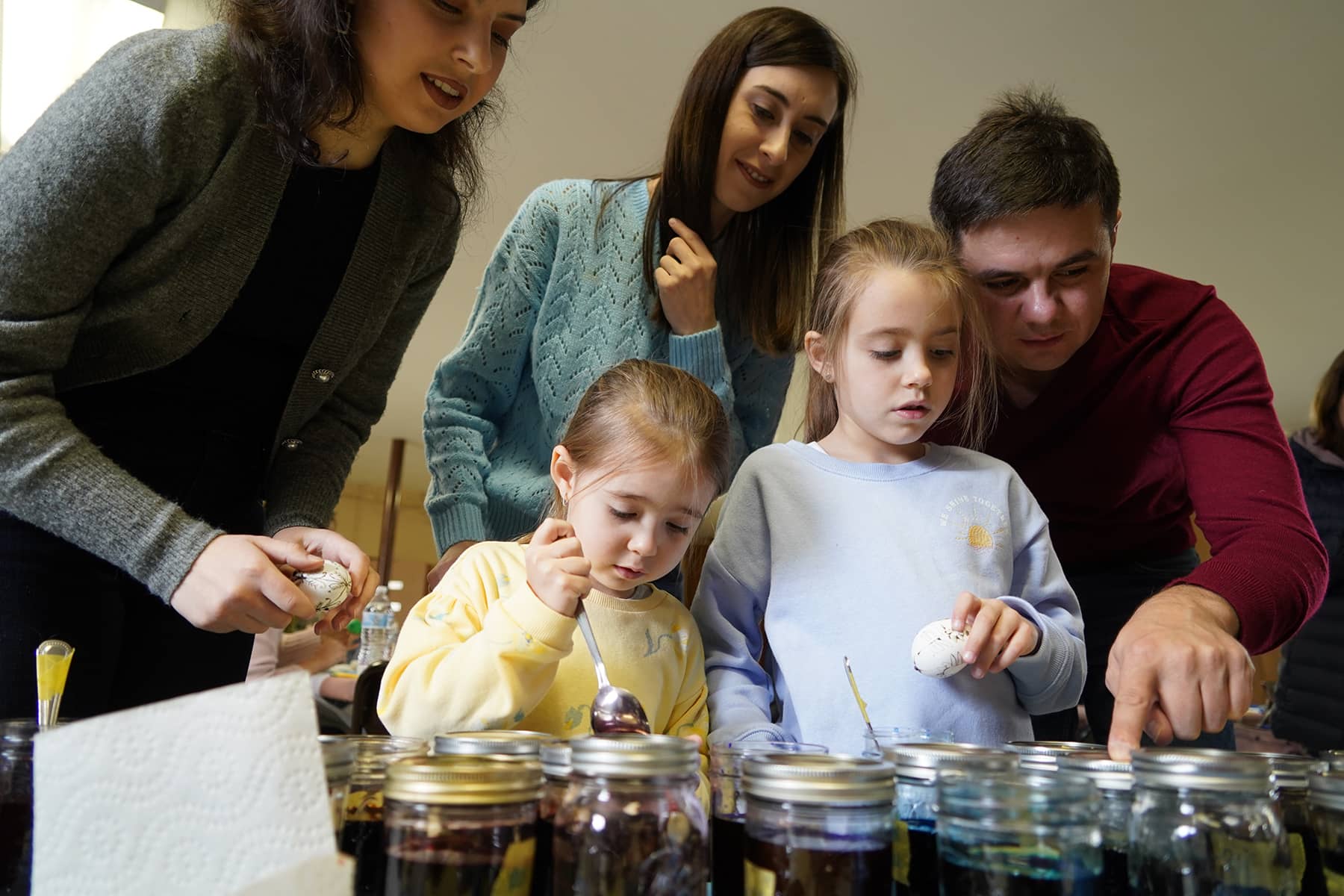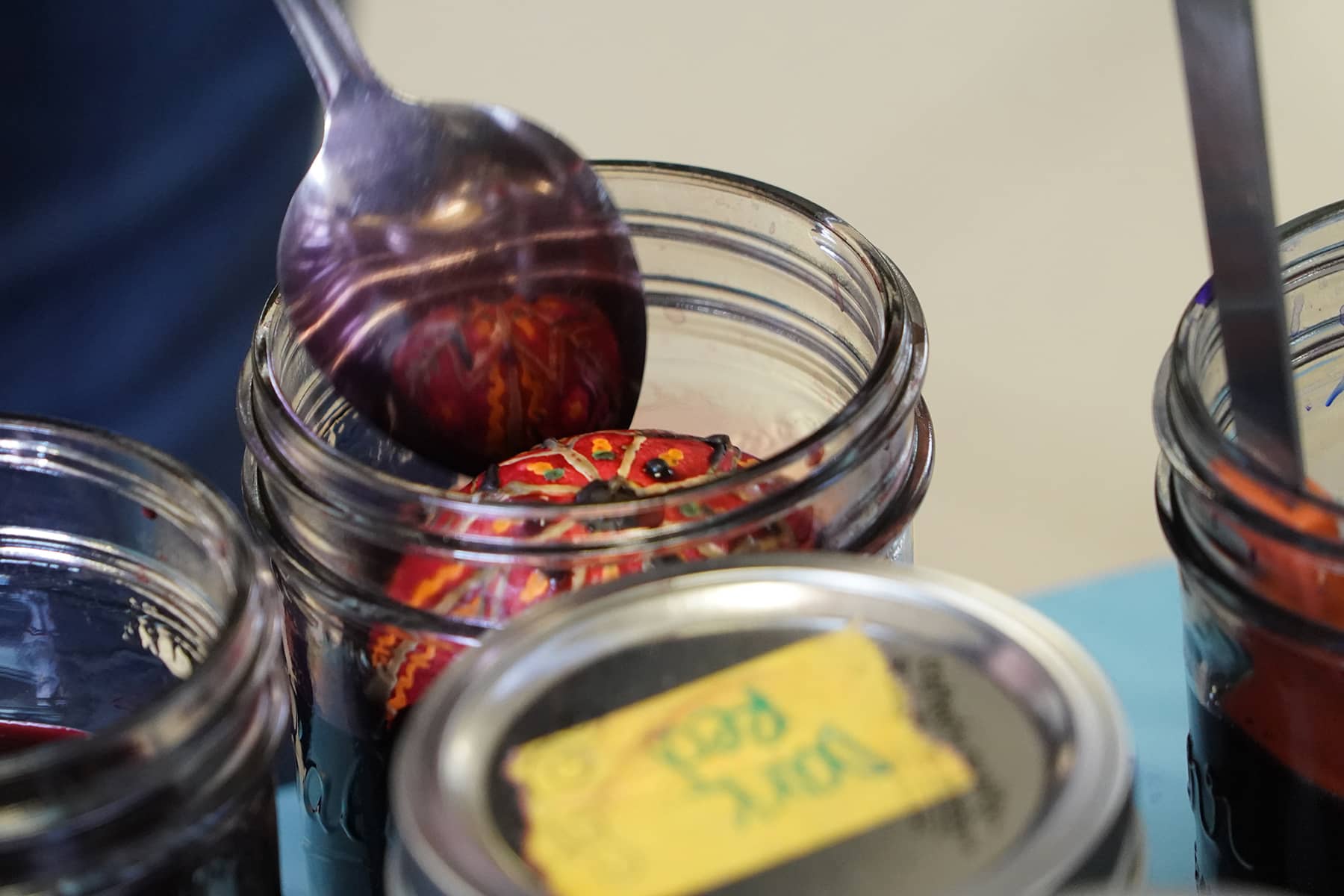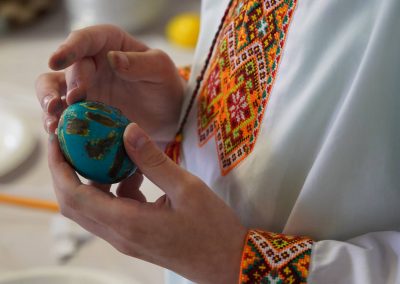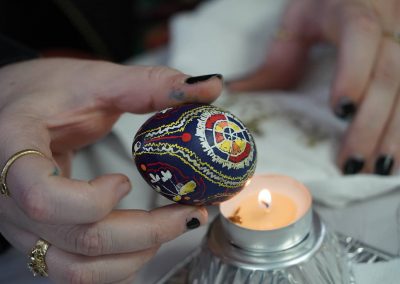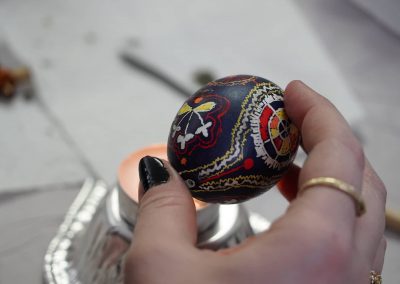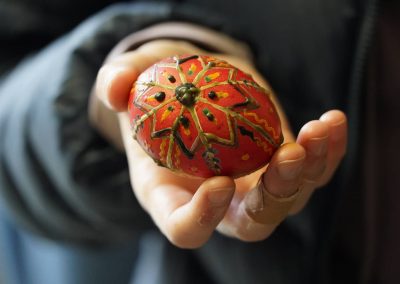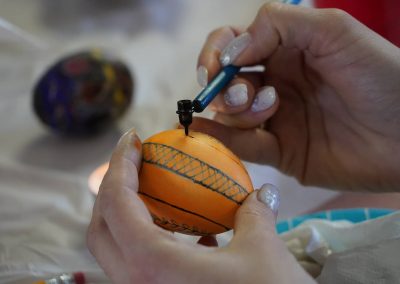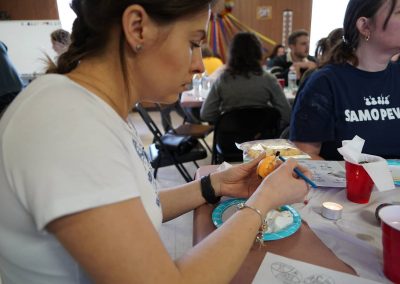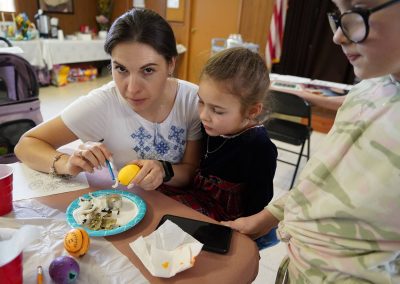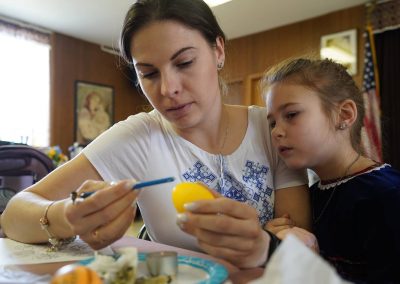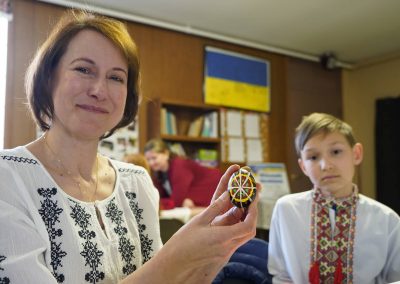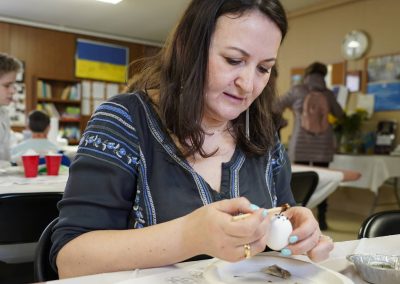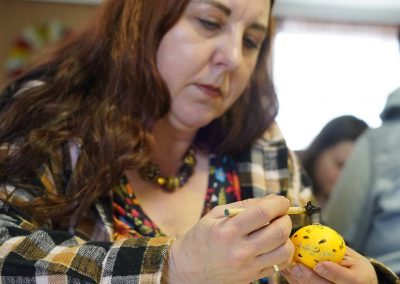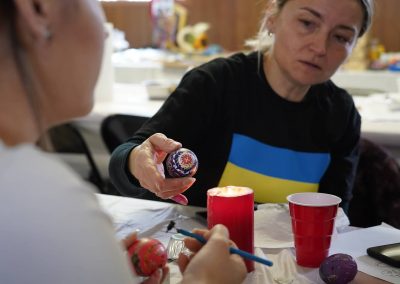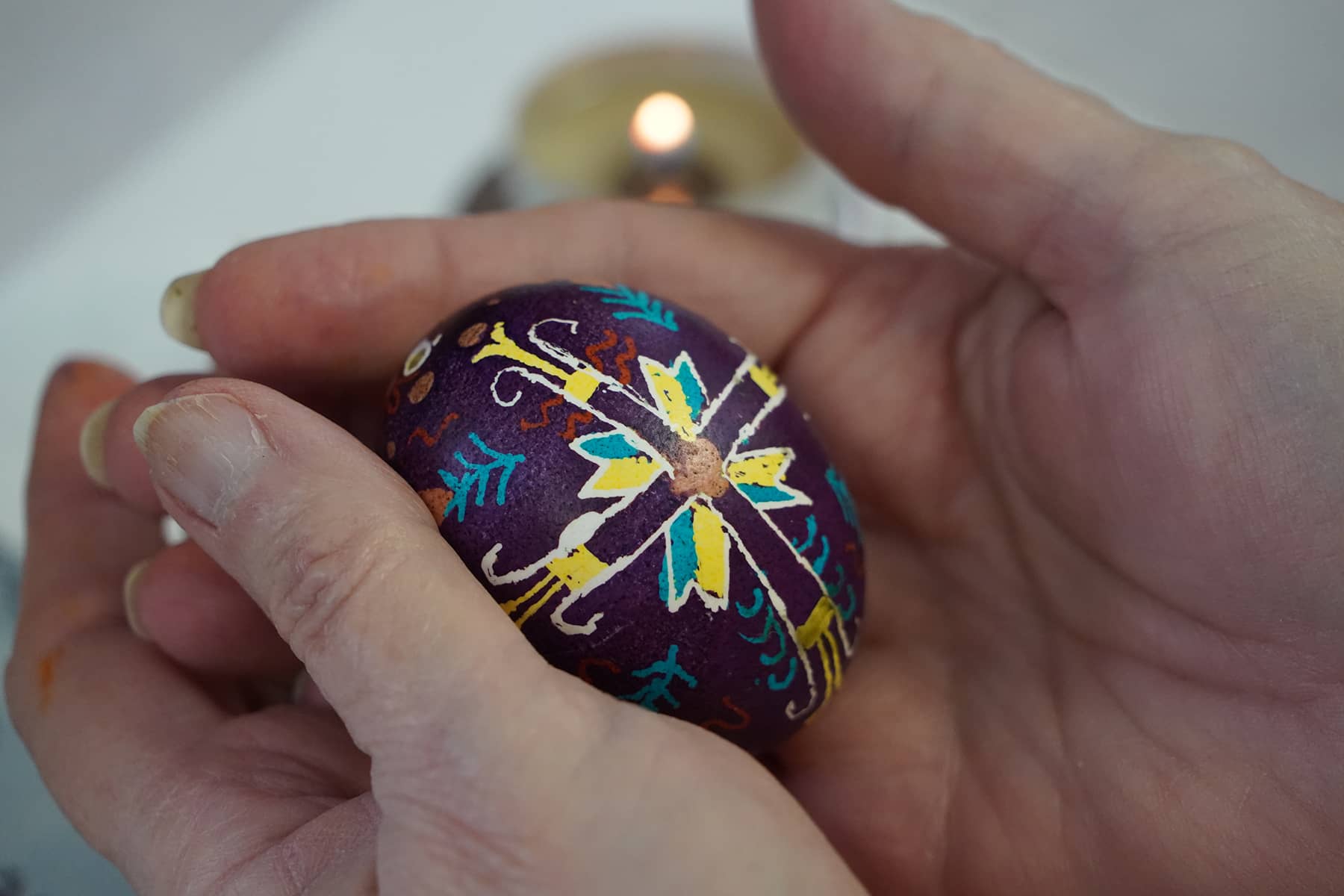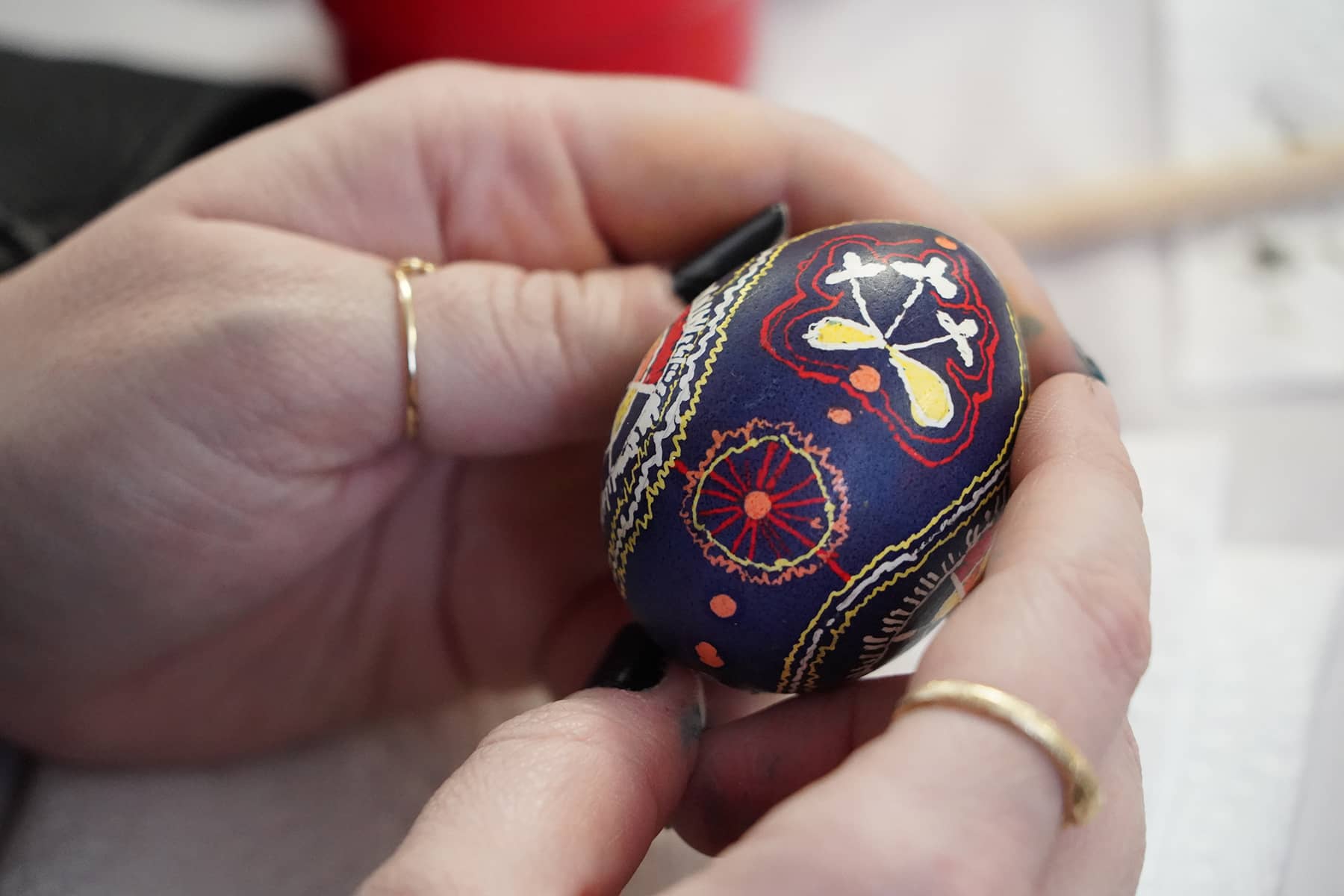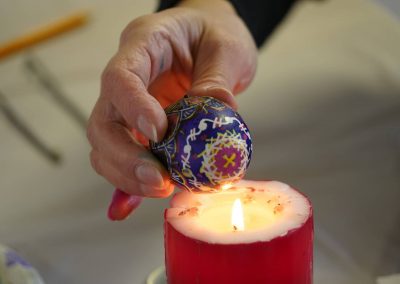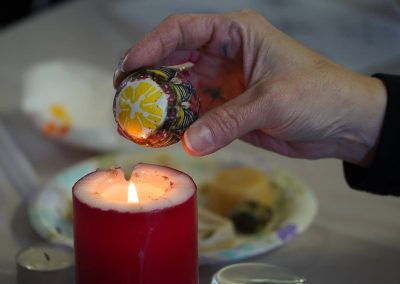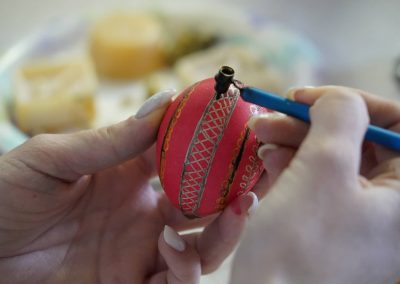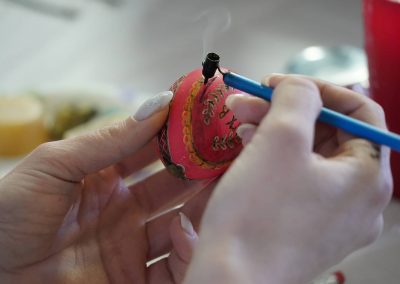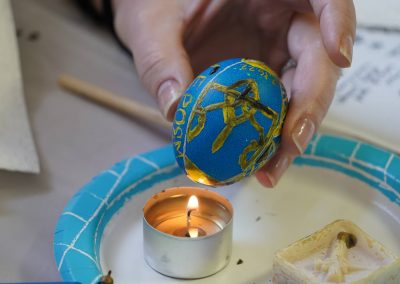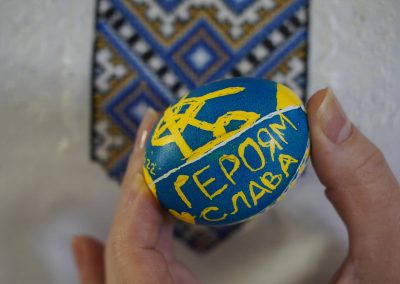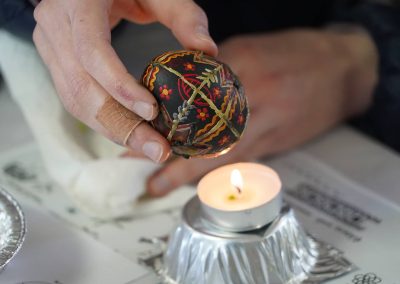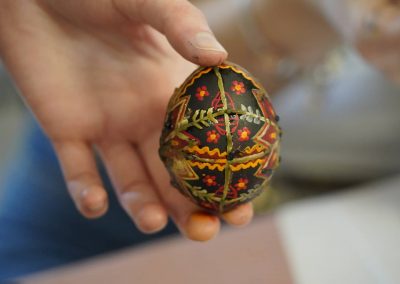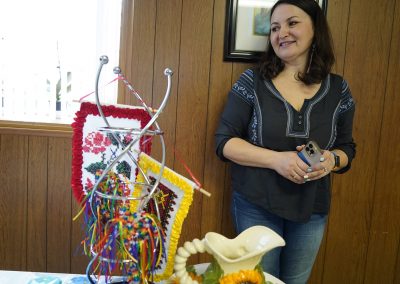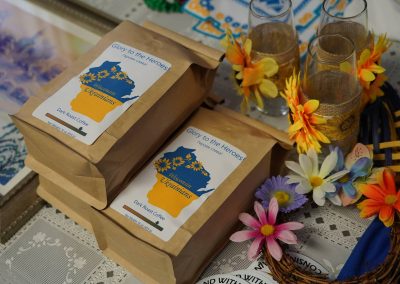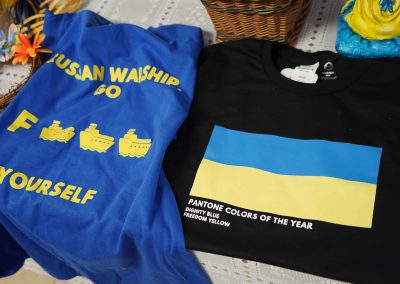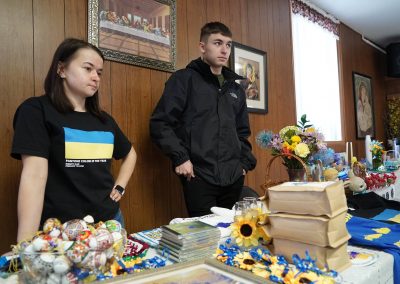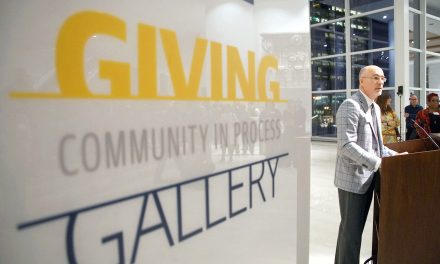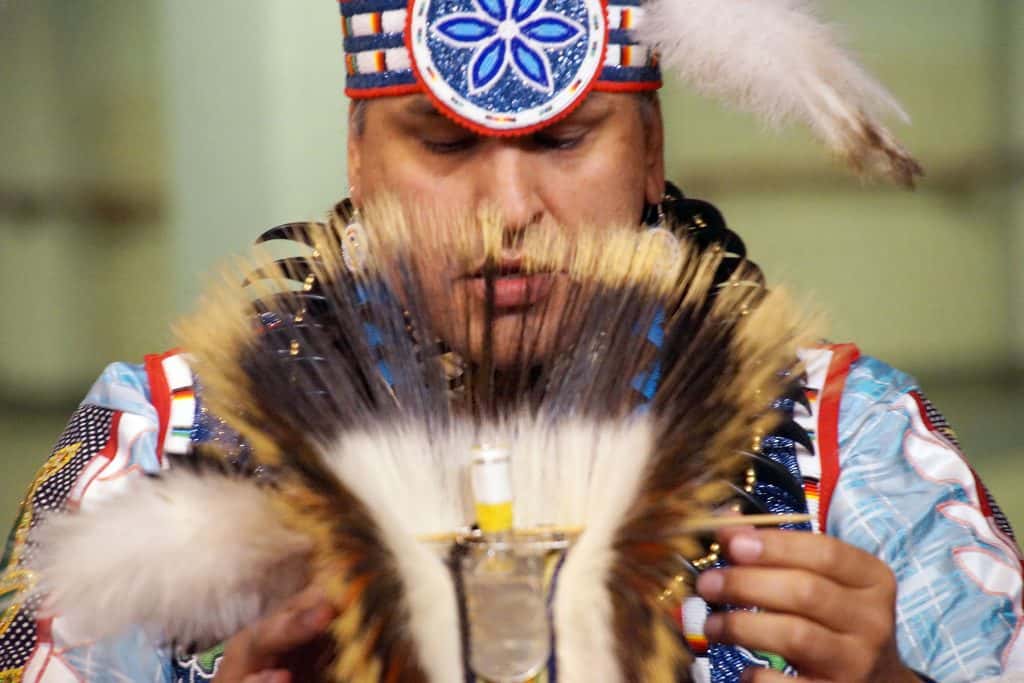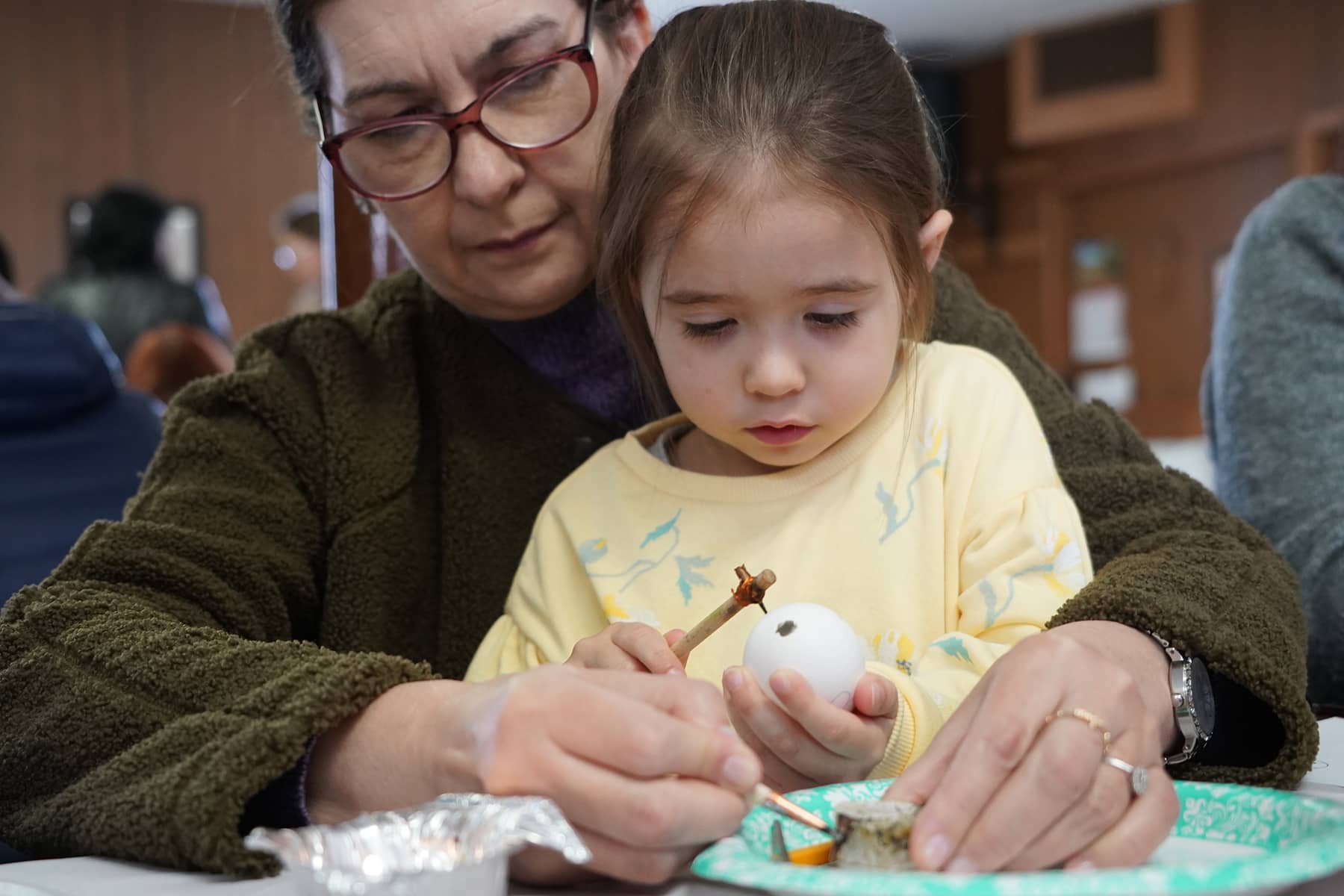
Local residents had the chance on April 16, the day before Easter Sunday, to participate in an ancient Ukrainian tradition that taught how to write beautiful designs on eggs.
Members of Ukrainian Milwaukee hosted the special workshop inside St. Michael’s Ukrainian Catholic Church. Known as Pysanka in Ukrainian, Pisanki in Polish, Kraslice in Czech, the Easter egg folk art is an expression of culture and faith that dates back several thousand years.
“For almost two months now, Ukrainians have been fighting daily for their very existence. They have been defending their lives, their land, and their identity,” said Halyna Salapata, founder of Ukrainian Milwaukee. “Pysanky are a unique cultural expression for the people of Ukraine. So we wanted to share this tradition that symbolizes Easter with the people of Milwaukee.”
Salapata said that Ukrainian crafts have been passed down for generations in the same way. Teaching pysanky helped to promote interest for Ukrainian culture in Milwaukee, and collect donations for the ongoing war effort. Ukrainian Milwaukee volunteers Amy Mulhall, Krystia Nora, Nadiya Kavyuk, Solomiya Kavyuk, Oksana Ovod, Ola Skyba, and Olesya Rogatinska helped dozens of participants for over three hours write their pysanky.
The word pisanka comes from the Ukrainian verb “to write” or “to inscribe,” as the designs are not painted on, but written with melted beeswax. Using a hollow chicken egg and layers of natural dyes, the intricate pysanka eggs are covered in symbolism of colors and design.
Ticket sales from the event and all donations went directly to Ukraine to help those fighting on the frontline. Since the February 24 Russian invasion, members of Ukrainian Milwaukee have organized cultural events, rallies, and local fundraisers. The efforts have focused public awareness in Wisconsin on Russia’s brutality in Ukraine, and directed much needed humanitarian supplies to support the war of resistance.
For much of the 20th century, pysanky writing was outlawed in Ukraine under the atheist Soviet regime. However, the Easter folk ritual flourished among the Ukrainian diaspora in places like Canada.
In 2019, the Ontario Branch of the Ukrainian Museum of Canada hosted a major Pysanka Exhibition. On display were 46 works from 24 North American artists, with styles that varied from traditional folk motifs to fairy tales and biblical themes.
In pre-Christian times, the egg symbolized rebirth and abundance in springtime festivals. With the arrival of Christianity in Ukraine in 988, the pagan tradition of pysanky blended ancient rituals with Christian traditions observed at Easter.
One of the oldest pysanky legends told of a young woman, who was on her way home from the town market with a basket of eggs on what would become the first Easter morning. She met a stranger with wounds on his hands along the way and offered him some fresh water. When she arrived home and uncovered her basket, she discovered her eggs had been turned into beautiful pysanky.
Milwaukee has a small but thriving Ukrainian American community, and Irpin is a sister city. Follow our special coverage at mkeind.com/ukraine for updates on Putin’s invasion, and about how the fight by Ukrainian people to preserve their democracy is having an impact on the families and businesses here in Milwaukee. 🇺🇦 Слава Україні! Героям слава!
Lee Matz

